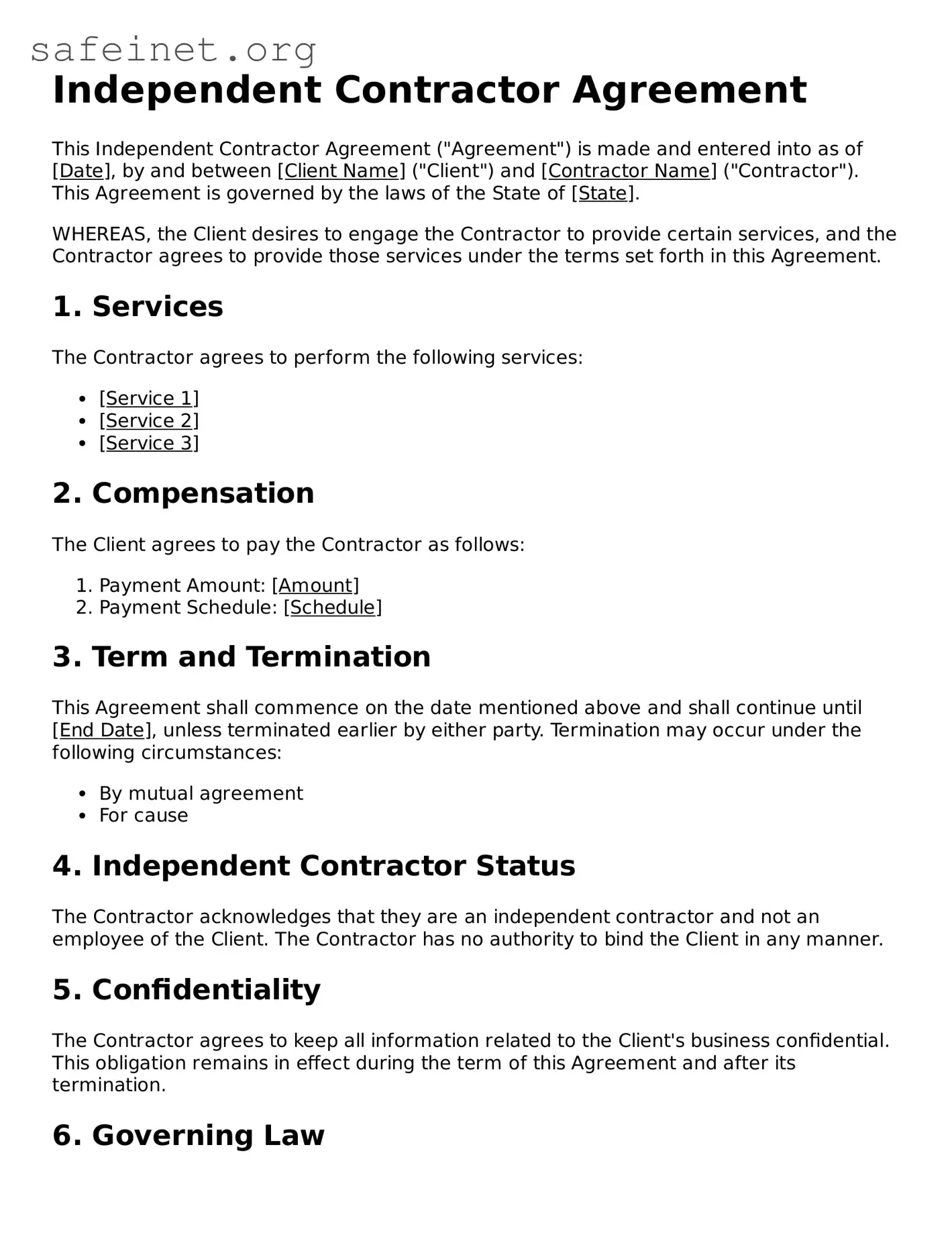What is an Independent Contractor Agreement?
An Independent Contractor Agreement is a legal document that defines the relationship between a business and an individual hired to perform services. It outlines the terms and expectations of the work to be completed, including payment, project timelines, and the rights and responsibilities of both parties. This agreement helps to clarify what is expected and minimizes potential disputes down the line.
Who should use an Independent Contractor Agreement?
This type of agreement is suitable for businesses that hire independent contractors for specific projects rather than employing individuals as full-time staff. It is commonly used in various industries, such as creative services, consulting, construction, and technology. Any business looking to maintain clear boundaries regarding project scope and liability should consider using this agreement.
What key elements should be included in the agreement?
Essential components of an Independent Contractor Agreement include the scope of work, payment details, deadlines, confidentiality clauses, and intellectual property rights. It’s also important to include termination conditions to clearly define how either party can end the agreement. By including these elements, both parties can have a clear understanding of expectations and outcomes.
How does the Independent Contractor Agreement protect both parties?
This agreement protects both the business and the contractor by clearly outlining their respective rights and obligations. For instance, the contractor knows what tasks they need to perform, while the business understands how much they will pay and when. By documenting these details, both parties reduce the risk of misunderstandings or miscommunications, thereby fostering a positive working relationship.
Can an Independent Contractor Agreement be modified after it’s signed?
Yes, an Independent Contractor Agreement can be modified, but both parties must agree to any changes. Typically, modifications are made in writing, which can include amendments to specific sections or entirely new terms. It is crucial to keep a record of any alterations to ensure that everyone remains on the same page regarding the agreement's terms.
What are the tax implications of being an independent contractor?
Independent contractors are responsible for their own taxes, unlike employees, whose taxes are withheld by their employer. Contractors receive a 1099 form at the end of the tax year, reporting their income. It is essential for independent contractors to keep track of their earnings and expenses throughout the year, as they may owe self-employment taxes. Consulting with a tax professional can provide guidance on maximizing deductions and understanding tax liabilities.
What should I do if a contractor does not fulfill their obligations under the agreement?
If a contractor fails to meet their obligations, the first step is to communicate your concerns directly with them. Often, issues can be resolved through dialogue. If that doesn’t lead to a resolution, the agreement may outline specific procedures for dispute resolution. Depending on the situation, you might consider mediation or, as a last resort, legal action. It’s advisable to review the terms of the agreement to understand your rights and options in these situations.
